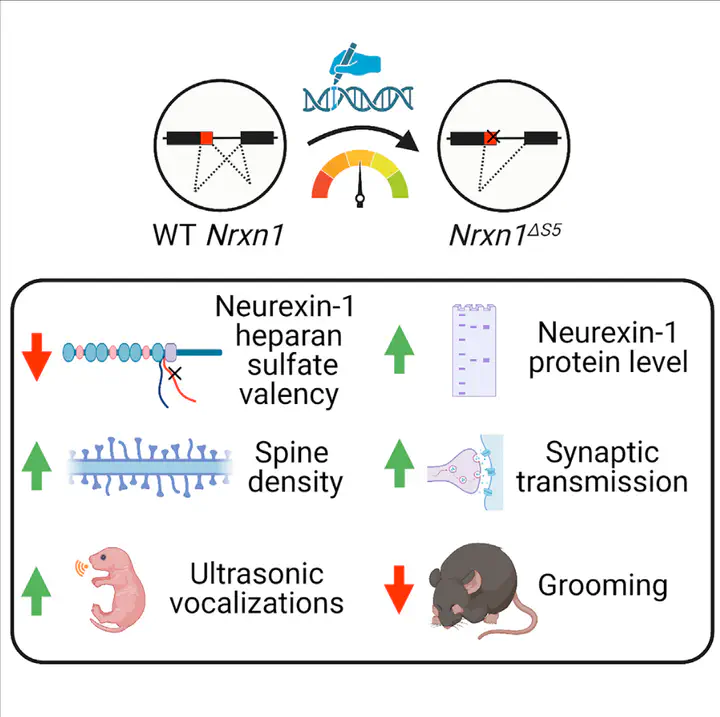Alternative Splicing and Heparan Sulfation Converge on Neurexin-1 to Control Glutamatergic Transmission and Autism-Related Behaviors

Abstract
Neurexin synaptic organizing proteins are central to a genetic risk pathway in neuropsychiatric disorders. Neurexins also exemplify molecular diversity in the brain, with over a thousand alternatively spliced forms~and further structural heterogeneity contributed by heparan sulfate glycan modification. Yet, interactions between these modes of post-transcriptional and post-translational modification have not been studied. We reveal that these regulatory modes converge on neurexin-1 splice site 5 (S5): the S5 insert increases the number of heparan sulfate chains. This is associated with reduced neurexin-1 protein level and reduced glutamatergic neurotransmitter release. Exclusion of neurexin-1 S5 in mice boosts neurotransmission without altering the AMPA/NMDA ratio and shifts communication and repetitive behavior away from phenotypes associated with autism spectrum disorders. Thus, neurexin-1 S5 acts as a synaptic rheostat to impact behavior through the intersection of RNA processing and glycobiology. These findings position NRXN1 S5 as a potential therapeutic target to restore function in neuropsychiatric disorders
Open access pdf.